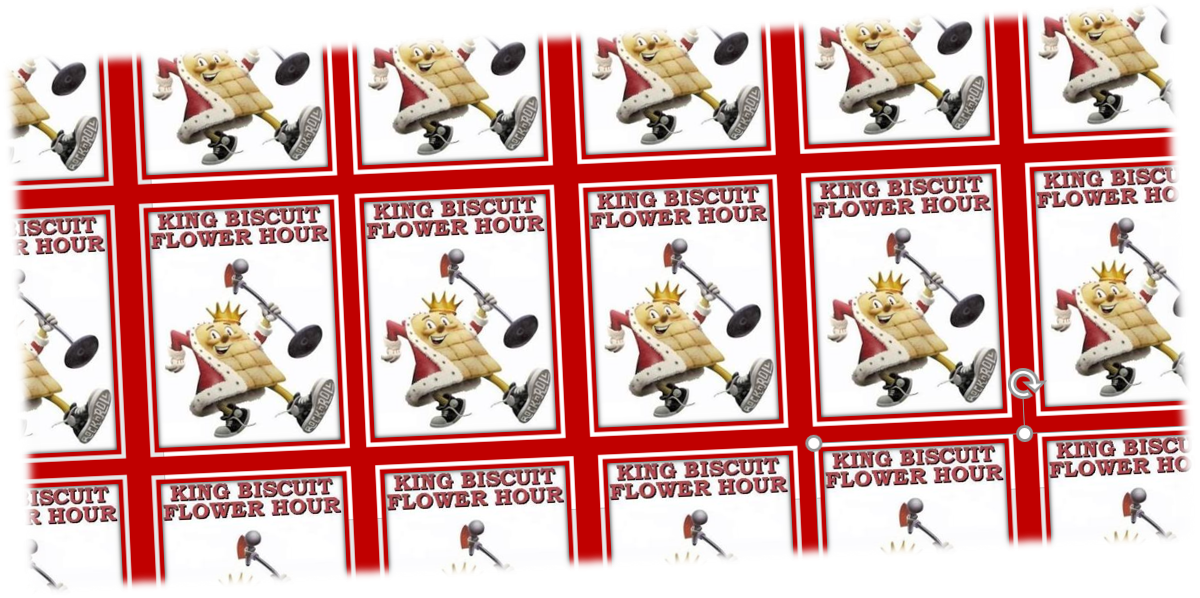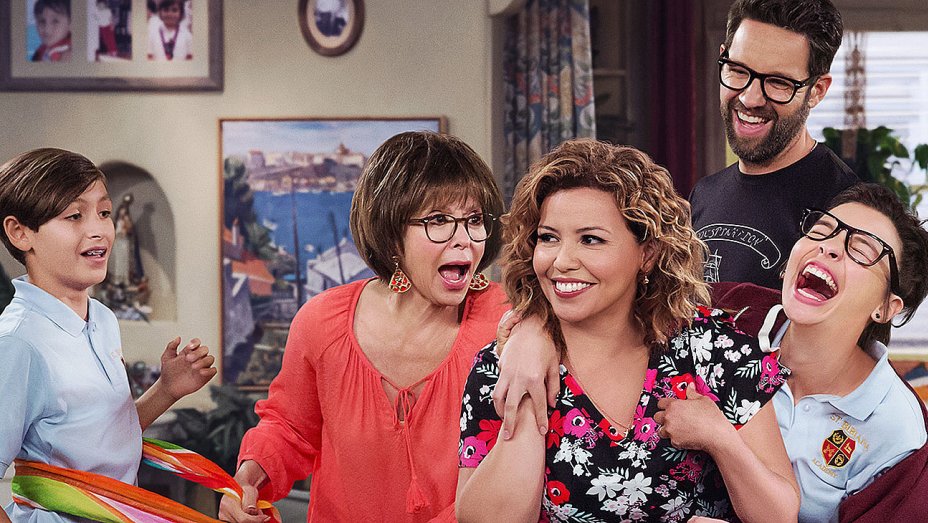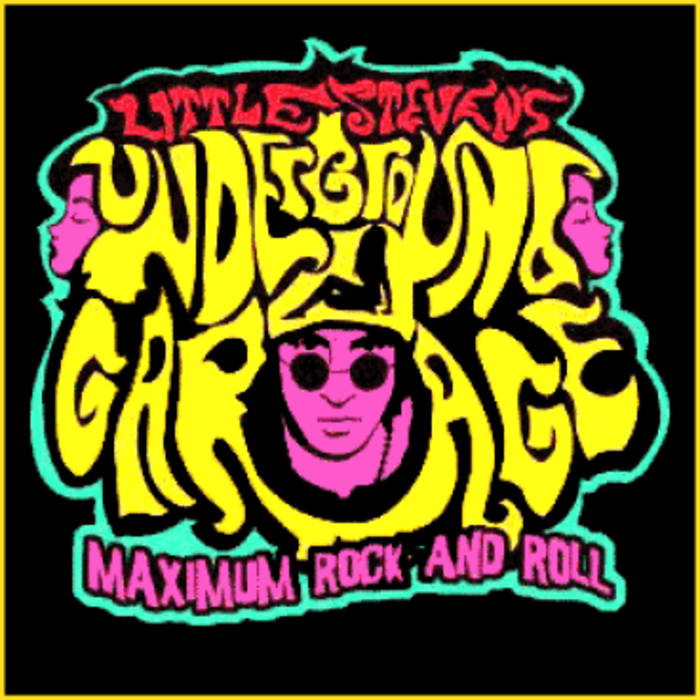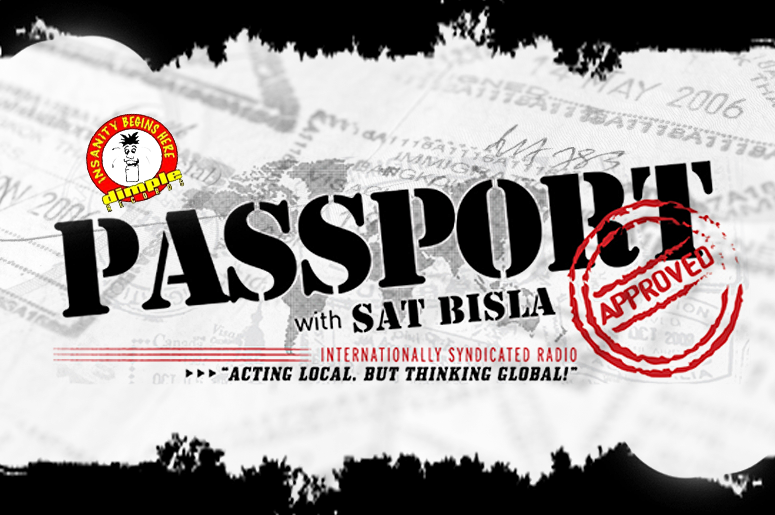
When I think about some of the artifacts of FM radio’s formative rock stations in the 70s, I think about bumperstickers, “homegrown” albums featuring local bands, and the show most stations programmed over the weekends – syndicated and homegrown shows like “The Seventh Day” (seven albums played back to back usually on Sunday nights) and variations on “Guest DJ” come to mind.
One of the biggest and most popular was the “King Biscuit Flower Hour,” a weekly concert special I wrote about exactly five years ago back in 2019. That post was very nostalgic for my more “seasoned” readers, and (hopefully) a “teaching moment” for younger users of JacoBLOG.
It was originally published at a time when Netflix had recently cancelled a show that seemed to be popular. But apparently, not popular enough. And so this post was all about how programmers make the tough call on whether shows are renewed…or cancelled.
When syndicated shows fail to attract large audiences, the initial reaction is to conclude the show simply wasn’t compelling enough. But my point back in 2019 is that these shows often come up short when stations fail to get behind them. I’m not sure anything has changed. – FJ
March 2019
Once upon a time there was a radio format called “AOR.” The acronym stood for Album Oriented Rock, and it represented an exciting group of influential stations in markets all over America. It exploded back in the 70s when many cities and towns had two and sometime three of these mainstream rock stations, all of which were playing a broad mix of rock n’ roll from the 60s and 70s – as we now know, the golden era for the music and the format.
And part of what these stations were all about was special programming, mostly on the weekends. As these stations multiplied and knocked down impressive ratings in market after market, syndicators like Westwood One, Global Satellite Network, MJI, the ABC FM Network, The Source, and others sprouted up with shows to fill the void. Many of these made AOR stations more interesting, providing programming and content not available anywhere else. Typically, they were hosted by some of the biggest personalities in rock radio who brought their special perspective and style to these shows.
One of the most successful was the “King Biscuit Flower Hour,” debuting in 1973, presenting original concert programming through the early 90s. D.I.R.’s Bob Meyerowitz conceived the show – a one-hour concert program highlighting the biggest and best bands of the era. The King Biscuit recording truck would park itself outside theaters and arenas, record the show, and distribute it first on reel-to-reel tape, later on vinyl records, and finally on CDs.
 As a programmer, I loved the show. Live performance is what brings music to life. And “King Biscuit” broke out long before there was MTV and regular concerts series on television. Every week, I’d receive those disks, always a well-recorded show, and would pull off one track to put in rotation that week to promote the show. (Don’t tell anyone about that – I never told D.I.R.). It gave us a chance to play a great live version of “Wheel In The Sky” or “Gimme Three Steps” or “Sultans Of Swing” for a few days – a way to sound just a little different from the competition, while promoting the upcoming show.
As a programmer, I loved the show. Live performance is what brings music to life. And “King Biscuit” broke out long before there was MTV and regular concerts series on television. Every week, I’d receive those disks, always a well-recorded show, and would pull off one track to put in rotation that week to promote the show. (Don’t tell anyone about that – I never told D.I.R.). It gave us a chance to play a great live version of “Wheel In The Sky” or “Gimme Three Steps” or “Sultans Of Swing” for a few days – a way to sound just a little different from the competition, while promoting the upcoming show.
How were the ratings? Well, it was difficult to break down Sunday nights in a meaningful way. You could see the 7-Midnight performance, but more often than not, “King Biscuit” was locked in with a bunch of other shows that ran every weekend. The Arbitron diary system wasn’t granular enough to make those kinds of calls. So, as we used to say, it was good image programming for the radio station, whether lots of people were listening on Sunday night or not. And we continued to program and promote it.
Contrast that with today, especially in PPM markets. Statistics don’t exist on the number of syndicated shows that have gone by the wayside in the past decade or so, but there are clearly fewer of them available to stations today. And special programs created by syndicators around holidays, concert tours, or the release of a new album have also dried up.
That’s because, in general, the consensus is these long form programs aren’t congruent with metered measurement. And it’s easy to just say “no,” rather than take a risk or give away commercial inventory to a syndicator.
I was thinking about “King Biscuit” while reading a New York Times piece about the cancellation of Netflix’s reboot of “One Day At A Time.” After  three seasons on the video streaming juggernaut, journalist James Poniewozik lamented the axing of this show.
three seasons on the video streaming juggernaut, journalist James Poniewozik lamented the axing of this show.
This new version of the 1970s Norman Lear show reimagined the story line, coming up with a modern-day twist featuring a single mother from a Cuban-American family trying to figure it all out. And yes, there was a “Schneider” on this new show, too, although in this version, the guy is a hipster.
The show has received consistently strong reviews from both critics and viewers – impressive for a an updated version of an original hit (think “The Odd Couple,” “Charlie’s Angels,” “24,” and other stinkers). But they weren’t enough to save the show from the Netflix pink slip.
Oddly enough, Netflix – a platform that does not have to endure the vagaries of the ratings – tried to sound as brokenhearted as “ODAAT” fans were feeling on social media:
The money line?
“…simply not enough people watched to justify another season.”
You have to wonder what the minimum performance threshold is on audience size/streams for a show in order for Netflix to consider it a success or at least worth renewing. Remember, we’re talking about a subscription service here – not a ratings/rate/revenue model like on network television.
And that’s a similar calculus that radio broadcasters are tasked with when they examine special weekend and other special programming. In public radio, these shows come with an actual price tag, so there’s an ROI question. In commercial radio, the “cost” is whatever ratings hit a station may (or may not) take as a result of running a syndicated show that wanders outside its conventional format boundary lines.
But then there’s the “cost benefit analysis.”
 Is there image upside in carrying a show like “Little Steven’s Underground Garage” or “Passport Approved” with Sat Bisla? Does it make a key portion of the audience happy, and does it help build a better brand? In the case of Little Steven, there’s talk and vintage classics that may not be familiar. And with Sat, it’s exposure to music from around the world that – by definition – the audience hasn’t heard.
Is there image upside in carrying a show like “Little Steven’s Underground Garage” or “Passport Approved” with Sat Bisla? Does it make a key portion of the audience happy, and does it help build a better brand? In the case of Little Steven, there’s talk and vintage classics that may not be familiar. And with Sat, it’s exposure to music from around the world that – by definition – the audience hasn’t heard.
Both Steven and Sat are wonderful, informed, and passionate storytellers. They’re true believers in the music they expose and play. And that kind of personality is something that is often missing in action from so many radio stations, especially over the weekends.
Neither of these guys know what a “safe list’ is. And that’s the point. They’re featuring music that isn’t going to make a conventional playlist or survive the arbitrary dial swings and pencil marks of music tests.
So, perhaps a meter or a diary will fall by the wayside on Sunday night. But is there an upside to running a special show that gives a station image value even though it’s not a ratings winner?
And in the big picture of a radio station’s story arc, what is really lost when a cool, special program is dropped from a lineup? Obviously, that’s a market by market, brand by brand, PD by PD decision. As they say, “your mileage will vary.”
But there’s more to the analysis than just taking a black and white view of a data-filled ratings spreadsheet. There’s a less calculable image component that is much harder to factor in or appreciate.
The Netflix team is smart – they obviously did their due diligence on the cost of producing this show versus its streaming engagement and whatever other data matters. And “One  Day At A Time” ended up losing – as did those who loved the show.
Day At A Time” ended up losing – as did those who loved the show.
In the short run, it’s hard to imagine Netflix being hurt by this decision – in spite of their “empathy” and “sadness.” They’re the biggest player in their field with the best programs, the strongest awareness, and undoubtedly, the best audience ratings (if we only knew what they were).
But over the long haul, more decisions like this one could begin to erode their brand equity with the same consumers who dutifully shell out money every month for the privilege of watching video content in the comfort of their own homes. Between Hulu, YouTube, and upstarts like Disney, there will very soon be even more viable video streaming options.
I’m not suggesting radio programmers throw caution to the wind and give every syndicator an open invitation into your stations. Ratings challenges and revenue generation and inventory pressures force them to be very choosy and analytical about the programs they air – even on Sunday night.
I’ve found that PDs often shy away from promoting these shows, either due to inventory pressure or because they simply don’t want to put much effort into them. And of course, that becomes the “self-fulfilling prophecy” of failure. If you don’t talk about these shows or creatively market them, you know what’s going to happen. People simply won’t find them on a weekend evening.
The next thing you know, you’ll be sounding like the Netflix team:
“We’re cancelling ______________ because simply not enough people were listening to justify us carrying it.”
So, what should the litmus test be for evaluating these shows? Yes, ratings matter but the truth is, they tend to be wobbly and unreliable – especially on Sunday nights. Then, there’s the subjective call about whether the show is any good – is it well-produced, how’s the talent, and does it fill a void?
whether the show is any good – is it well-produced, how’s the talent, and does it fill a void?
As a programmer, I took those variables into consideration, but for me, the tie-breaker was whether the show gave the station programming we simply couldn’t provide locally – whether it was artist interviews and performance, perspective and history, or production values we could never have achieved in-house. I saw it as a form of content dessert – something a little special that was just different enough from the regular format.
I also had a pretty good handle on what would truly make my audience happy – not all of them, of course – but the ones who loved the station enough to bother tuning in on Sunday nights.
Back then, none of them had social media accounts, YouTube channels, or even “communities” to interact with.
Today, they all do. And a special program that’s well-marketed, effectively “socialized,” and taps into influencers across these platforms has a a chance to expand the tent, build the brand, and maybe turn some P2s into P1s.
The thing is, I’ve rarely seen radio stations do an effective job of marketing special programming in the social space. Many don’t even try.
If radio doesn’t take the time and effort to make special programs special, why should the audience care? I’m not suggesting Netflix did a bad job marketing “One Day At A Time.”
But it’s often easier to cancel a show than it is to figure out how to market it to a passionate, sharing audience.
And it comes down to answering these two questions:
Does it make your station sound more special?
And are you promoting it that way?
- The Rock Hall’s Most Egregious Snub Yet? - May 16, 2025
- Attention Tech And Entertainment Writers: Don’t Mess With Radio! - May 15, 2025
- 3 Socio-Economic Shifts Every Radio Programmer And Seller Should Be Aware Of - May 14, 2025





I think the idea of special programming during the weekend is very good. I remember it’s kind of a geeky teenager that often I would listen to Monitor NBC and they had a special sounder that they used that I actually have used and copied on my podcast from time to time… Some really good stuff,
And of course the classic NBC sounder is still great or am I just showing how old and out of date I am
I miss these shows too. And I’m in a position to run a few of the remaining shows, but I don’t. Why? Thirty years ago, we required our personalities to work 6-days per week. Everyone worked a Saturday or a Sunday. The remaining weekend airshifts were often staffed by not-ready-for-prime-time air talent. The syndicated programs, we’re a way to put excellent professional programming into those weekend time slots nobody on the full time staff wanted to work. Today, with the ability to get more on-air time out of our 1st string personalities, thanks to voice tracking and other means, we don’t have to rely on those programs to sound great on Saturday or Sunday night. I loved King Bicuit, and Silver Eagle. I even loved Casey Kasem (even thought the first hour of the show always sucked.) But I don’t need them anymore.
Weekend specials matter, especially when local. The secret sauce is making your stations special (sound, service, connection, personality) every hour of every day, all week long.
Amen, Clark. The tragedy for this industry happens when jaded, blasé managers let radio’s secret sauce drip through their fingers. With a little courage, appointment radio could ride again.
I live in the 3rd largest radio market, number one in revenue. To my ears, nobody in this market knows how to do a great promo. Let’s start there.
I wouldn’t go that far, but it’s a very different day from the one when each staation had their own production director.
So I figure you are in Chicago. Are you it is number one in revenue?
Hey, I love the old-school specialty shows. But we’re not the same workforce we were back then. Folks in civilian jobs could be working at home, working Saturday through Thursday, working 4-12 or 6-2 or 8-4, working four days a week. You can’t cater to a 9-to-5 workplace any more, which makes it hard to plug in weekend shows and assume you’ll have an audience with time to listen to and appreciate the show.